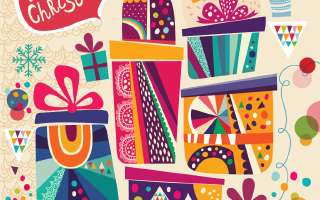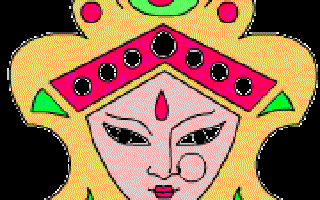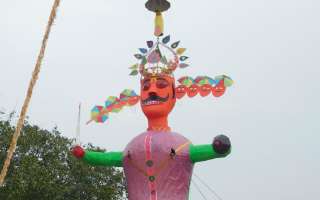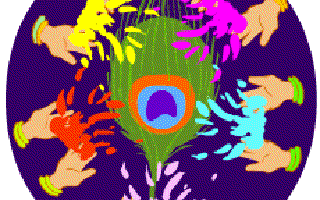29 items in this section. Displaying page 2 of 3
Was Christmas Celebrated Thousands of Years before Christ's Birth?
Did you know that the celebrations at Christmas might have nothing to do with the birth of Christ? In fact they may well lie in a feast called Sacaea that was celebrated thousands of years before Christ’s birth. Over 4000 years ago, in the region that is now Iraq, a five-day festival with the exchanges of gifts, the staging of plays, accompanied by merry making and processions, marked the end of winter and ushered in the New Year....
Here Comes Pujo!
Durga Puja is the most important festival for the people of West Bengal, the Eastern Indian state that has been home to three Nobel Laureates – Rabindranath Tagore, Amartya Sen, and Mother Teresa – as well as Oscar awardee Satyajit Ray. Durga Puja, or Pujo as it is usually referred to, ushers in a sense of well-being, with Diwali following close on its heels. The timing is just right: the sweltering heat, and the post-monsoon humidity gives way to Sharat or autumn....
Gurpurab – the birth of Guru Nanak
The Birthday of Guru Nanak, the founder of Sikhism, is traditionally celebrated on Kartik Puranmashi, or the full moon day of the month of Kartik. According to the Shiromani Gurudwara Parbandhak Committee (SGPC), Guru Nanak Sahib was born on 15th April, 1469 at Rai-Bhoi-di Talwandi in the present district of Shekhupura, now Nanakana Sahib in Pakistan. Since the birthday falls on the full moon day of the month Kartik, that is the day that Sikhs all over the world celebrate the birth of their first guru....
The Making of the Goddess
On an ordinary day, the names Kumartuli and Krishnanagar would not make much of a difference to a Bengali. But come Durga Puja, and these two ordinary towns near Calcutta, become the focus of great attention. For it is here that the clay idols of Durga are made. This age-old tradition of clay sculpture has been preserved by the community of Pals. Months before the Puja, clay artisans start to breathe life into the images of Durga....
The Story of Dussehra
Dussehra, also called Vijayadashmi (or Bijoya in Bengal), is the culmination of the nine-day Navaratri celebrations. It is a festival that marks the killing of Ravana, his son Meghanatha and brother Kumbhakarna, by Rama. It is seen as the vistory of good over evil The Ramayana The epic Ramayana, describes the story of Rama. Rama was the exiled prince of the kingdom of Ayodhya. While in exile, he lived in the forest with his wife Sita and brother Lakshmana....
Holi is For Children
Kamla Mathur was born and brought up in Etah, a small town in Uttar Pradesh. Now, at 65, she lives in Delhi and reminisces fondly of the Holi she and her siblings celebrated at ‘home’, in the area called Brajbhoomi, the land where the Braj dialect of Hindi is spoken. Brajbhoomi refers to the places connected to the legends of the birth and childhood of Krishna and his dalliance with Radha. As Holi continues to be a significant festival for the Brajvasis, many of the old ways of celebration survive....
Rediscovering a Smoke-less Diwali
Think of Diwali and firecrackers start exploding in the mind – that is how strong the association of crackers is with the festival of lights. Legend has it that on Diwali, the sound of firecrackers resounds through the universe, announcing the homecoming of Lord Rama after a long period of exile. Another legend says that people began exploding crackers to convey to the gods, their joy at being alive and well on earth. Rediscovering a Smoke-less Diwali [Illustration by Sudheer Nath] Now come back to the present when the uncontrolled celebration of the victory of good over evil itself seems to have become a source of pollution....
Deepavali: Festival of Lights
Deepavali – or Diwali – as is commonly uttered – literally means rows of lamps. These lamps light up houses all over the country, but for different reasons. In West Bengal, it is time to worship Kali, the goddess with the fearsome strength, and in Bihar and Uttar Pradesh it is time to remember Dhanvantari, the divine physician. To some, the lights are a reminder of the return of Rama to his home after 16 years of exile....
The Nine Nights of Navaratri
This year, the end of September marks the onset of Navaratri or “nine nights” in the Hindu calendar. With this begins one of the most festive phases in India, with Durga Puja in east India, Dussehra in north, central and west India, and Saraswati Puja in South India. It also sets the stage for Diwali in the near future. Navaratri literally means ‘nine nights’. This nine-day period, sacred to Durga, is celebrated sometime in the months of October and November....
Foods of the Festival
All festivals revolve around fasting — and feasting. The latter part is a special attraction, especially with children! We bring you some mouthwatering recipes that are part of the Navaratri and Durga Puja celebrations. Interestingly, chana, or chickpea – also called Bengal gram and Garbanzo – is part of festival food across India. It is the key ingredient in the Bengali Chholar Dal, the Tamil Chundal and the Maharashtrian Pooran Poli. Chana has been around for thousands of years....



